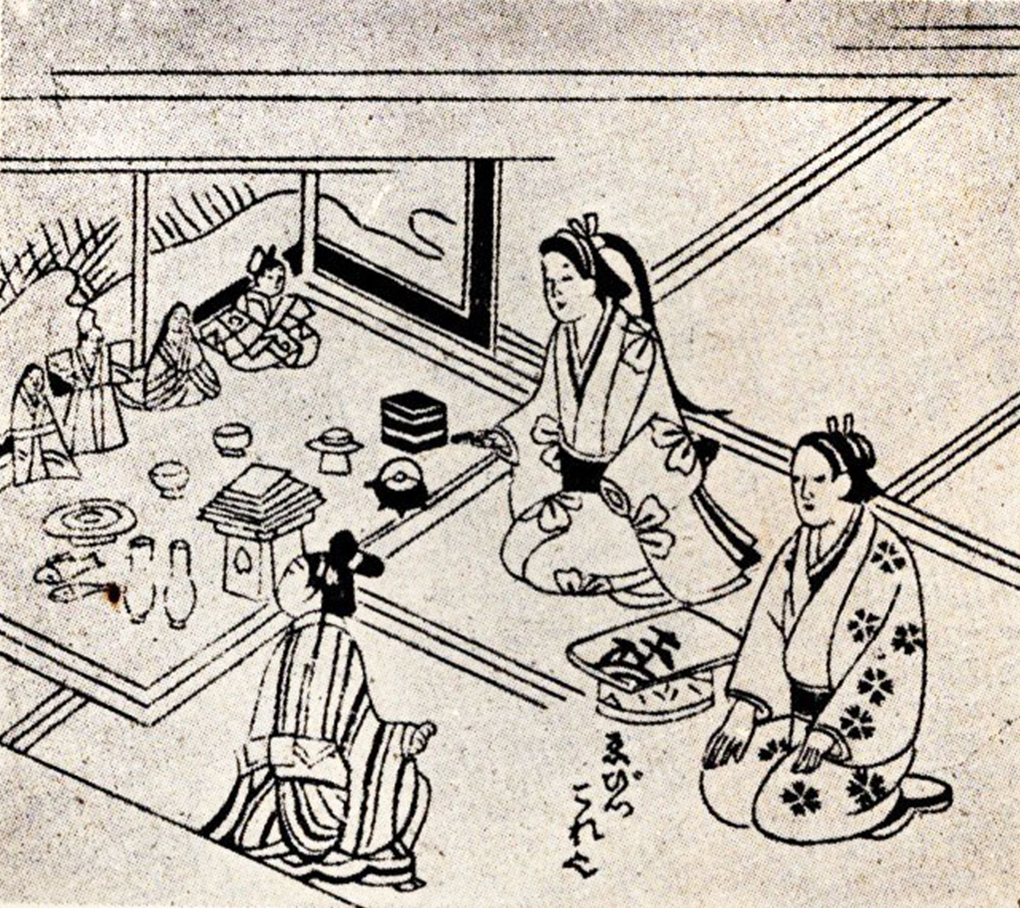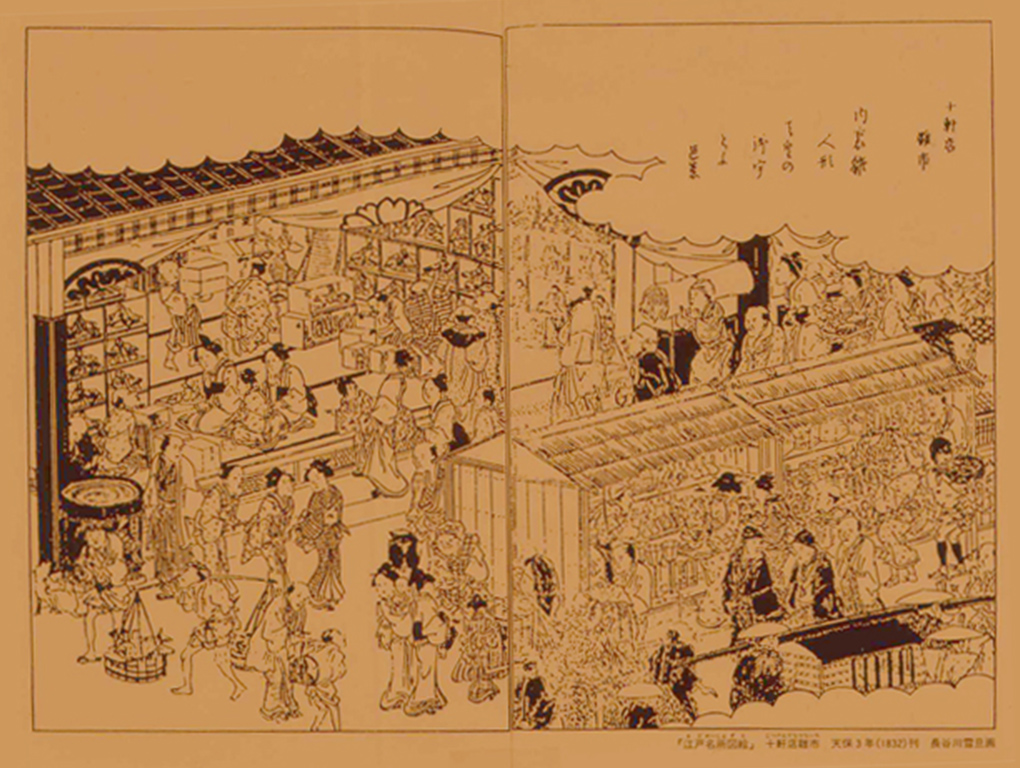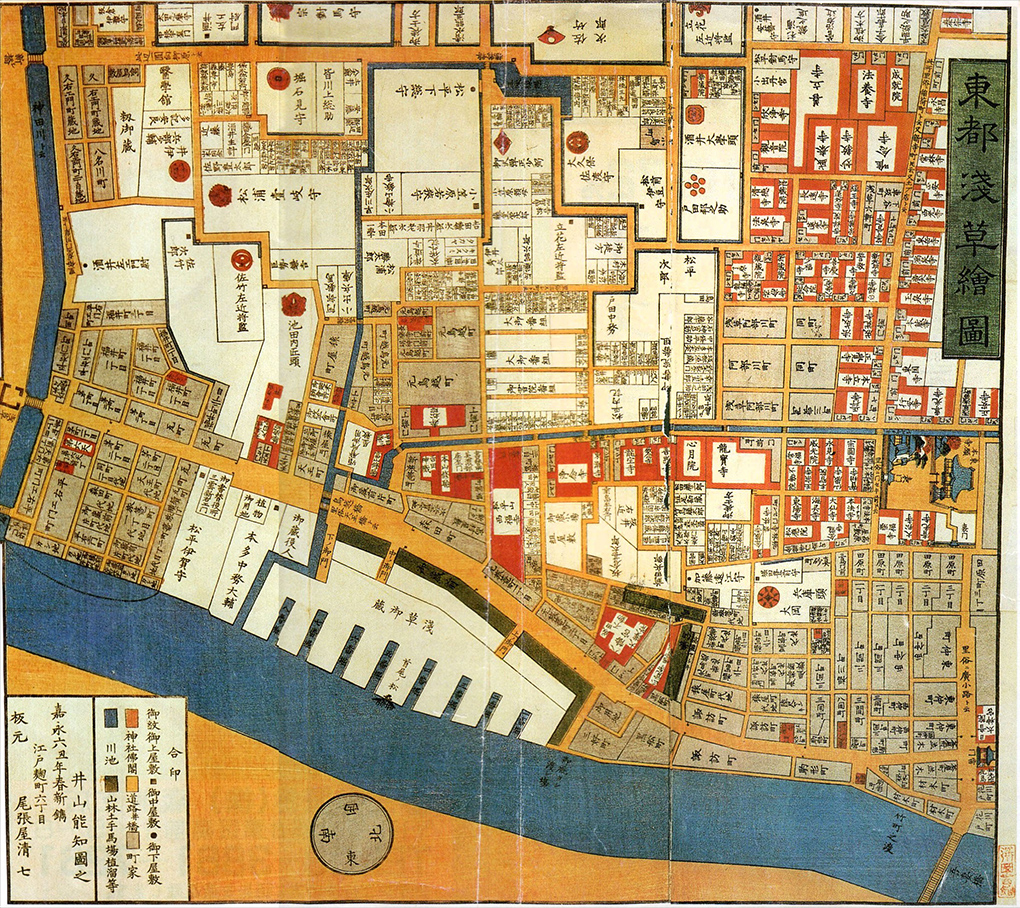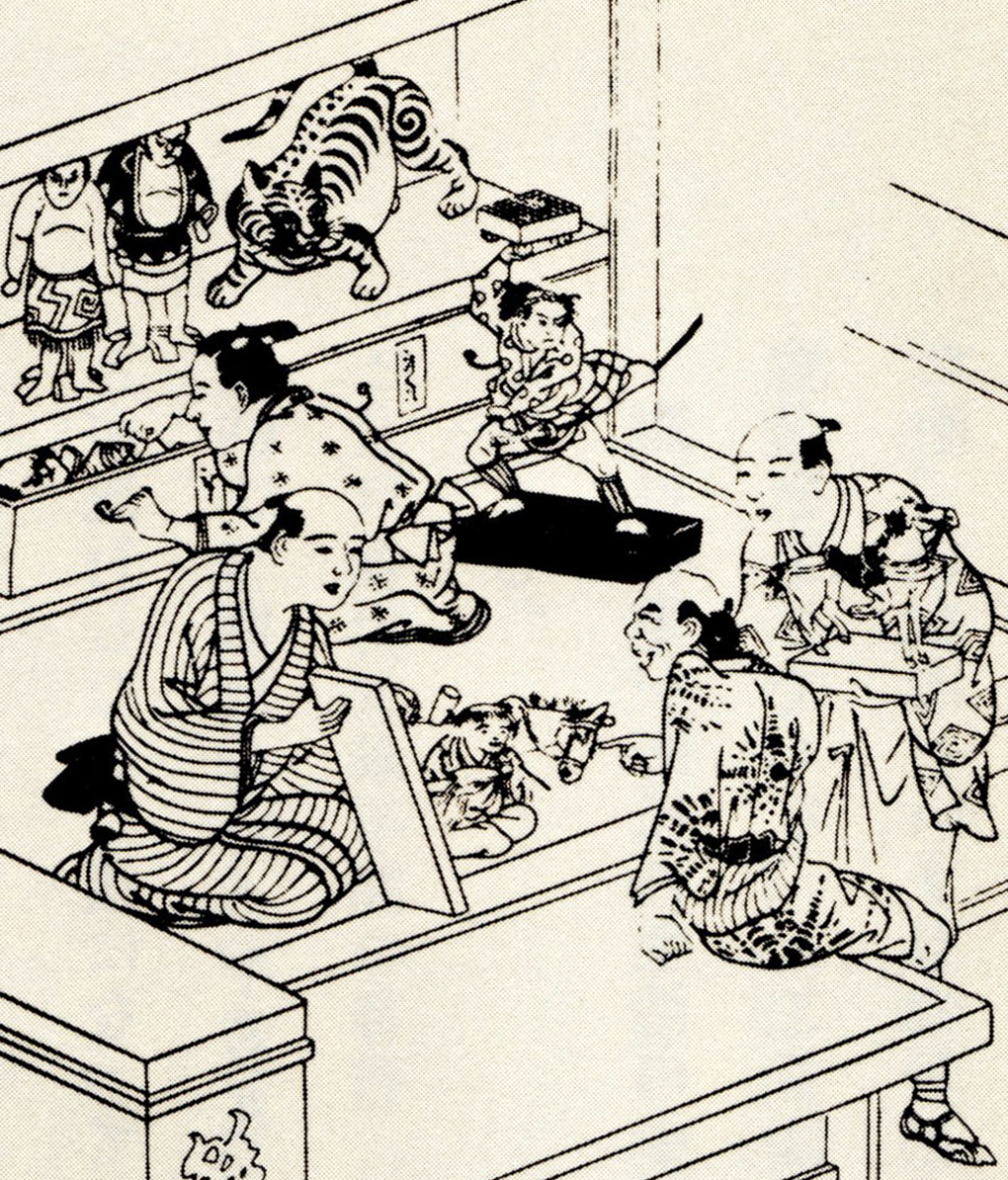The Hina Doll Market and Hina Doll Stores
Hina Doll Markets are made up of “Hina company.” It consists of various groups, such as big wholesale stores called O-dana, fixed stores called Tokodana, doll makers, and small retail dealers.
At first, even big wholesale stores, Ō-dana, often could not make a living only by selling dolls. Most of them dealt in toys or housewares, including Tabi (Japanese socks) and small wares.
In that process, people who gained power as wholesalers came to form a “company” exclusively for wholesalers. This “company” was called the “Association of Doll Wholesalers” and it was comprised of two groups: the first group was the “Association of the Playing Hina Doll” and the second group was the “Association of the Seasonal Hina Doll.” This Association of Doll Wholesalers acted as a leader and supported the doll world.
In the “Edo Kaimono Hitori Annai (Shopping guide of Edo) published in 1824, the third head of Kyugetsu, Yoshinoya Kyubei, was named as one of 10 people belonging to this first group.










